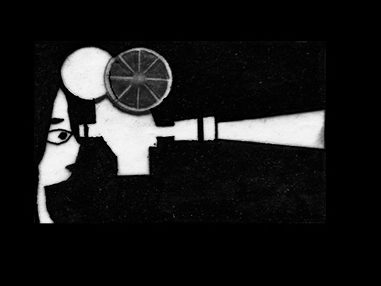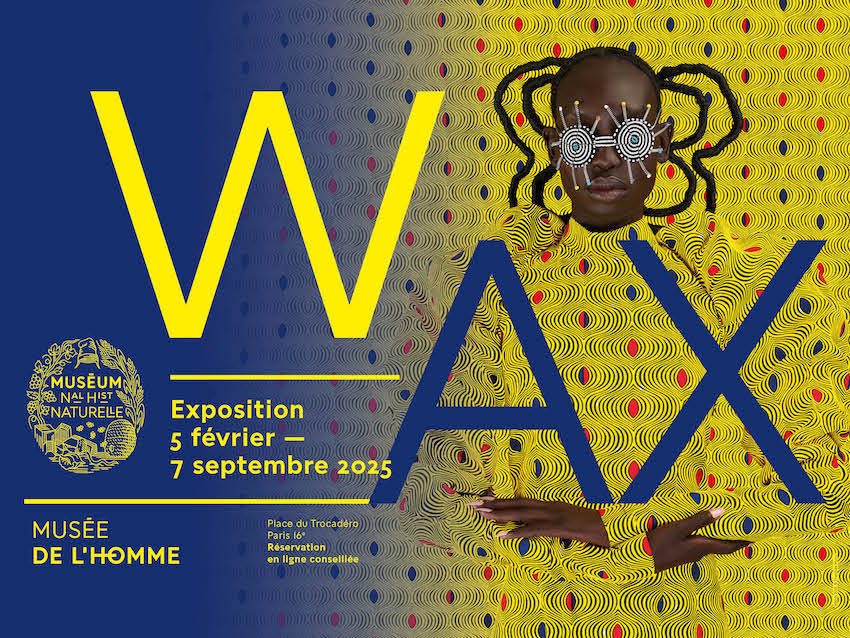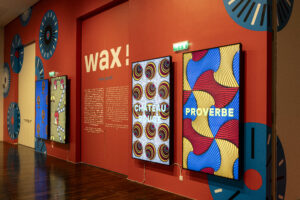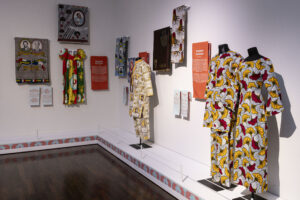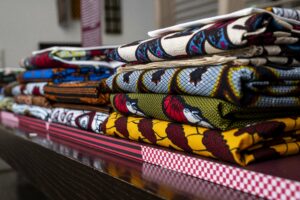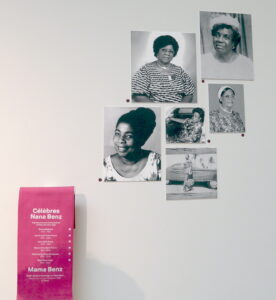Wax in All Its Forms: A Dazzling Exhibition at the Musée de l’Homme
© MNHN – A. Iatzoura
© MNHN – A. Iatzoura
© MNHN – A. Iatzoura
The wax fabric immediately brings back the colors of my childhood. Born in Abidjan, I grew up in Libreville and later lived in Brazzaville. Attending this exhibition was, therefore, an obvious choice.
This vibrant cotton fabric, adorned with evocative patterns, is much more than just cloth. It is a language, an identity marker, and a testament to the historical exchanges between Africa, Europe, and Asia.
The WAX exhibition at the Musée de l’Homme, running from February 5 to September 7, 2025, delves into the history and cultural significance of this essential textile.
Wax regularly appears in high fashion, transforms into everyday accessories, takes over art galleries, and even becomes the subject of comic books, as illustrated by Wax Paradoxe by Justine Sow, a graphic novel accompanying the exhibition.
Encounters with Thandiwe Muriu and Justine Sow
A Fabric with Mixed Origins
Born in the 19th century from the European industrialization of Indonesian batik, wax fabric was embraced by West African cultures to the point of becoming a symbol of identity.
This history, shaped by the intertwined influences of multiple continents, is a central theme of the exhibition.
Visitors will learn how, in the mid-19th century, Ghanaian soldiers known as Belanda Hitam (“Black Dutchmen” in Malay), forcibly recruited into the Dutch colonial army, introduced these printed fabrics upon their return from Java. Their arrival sparked great enthusiasm among the local population.
These influences were later industrialized by European manufacturers, particularly Vlisco, which adapted the technique to create what we now recognize as wax fabric.
A thriving trade emerged, led by figures such as the Nana Benz of Togo (pictured in the exhibition), visionary businesswomen who, from the 1960s onward, turned wax into a luxury product and a marker of social status.
Nana Benz from Togo (photo taken during the vernissage)
Wax: A Fabric That Speaks
Wax fabric is never just a piece of cloth—it tells a story and conveys messages. Every design carries a meaning, whether emotional, political, or social.
Some patterns have gained global recognition. The “Chérie, ne me tourne pas le dos” (“Darling, don’t turn your back on me”) motif, often worn by married women as a warning to their husbands, or the “Michelle Obama’s Bag” design, inspired by the former First Lady’s style, became a best-seller in West Africa.
Fashion is social—it serves as a tool for women’s empowerment, a non-verbal means of communication, and a medium for both individual and collective expression.
Between Art and Protest
While wax has long been a textile of pride and cultural identity, it has also sparked debate.
Symbol of African Identity or Colonial Legacy?
From the plastic art of Beninese artist Romuald Hazoumé to the photographs of Omar Victor Diop, and the textile creations of Malian designer Lamine Badian Kouyaté (XULY.Bët), wax fabric is being reinterpreted, repurposed, and sometimes used to critique consumerism and social inequalities.
Between Tradition and the Future
Today, the wax market is dominated by large manufacturers, with cheap Asian productions flooding African markets. However, young African designers are reclaiming the fabric, prioritizing sustainable and eco-friendly production methods.
This exhibition, a journey through time and space, continues to raise questions. Wax fabric has a promising future ahead.
It remains a powerful symbol of memory, resistance, art, and heritage.
Scientific Curators
- Soloba Diakité – Art historian, expert in African textile heritage
- Cindy Olohou – Art historian and contemporary art critic
- Manuel Valentin – Anthropologist specializing in material heritage, scientific curator of the Museum’s cultural anthropology collections
Exhibition Curator
- Marie Merlin – Project manager, museographer
February 5 – September 7, 2025
17 Place du Trocadéro, 75016 Paris – M° Trocadéro (Lines 6/9)
Wednesday to Monday, 11 AM – 7 PM (Closed on Tuesdays)
Tickets: €15 / Reduced rate: €12 / Free for under 26s
